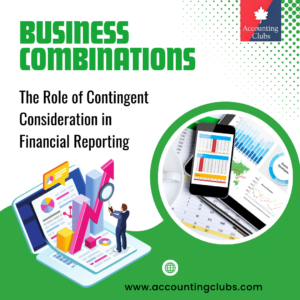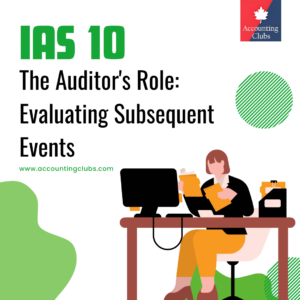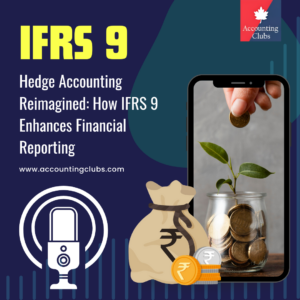Chapter 3: Measurement
Best estimate
A provision should be measured at the best estimate of the expenditure required to settle the present obligation at the balance sheet date.
This is the amount that an entity would rationally pay to settle the obligation or to transfer it to a third party at the balance sheet date. It will sometimes be impossible to settle or transfer the obligation at the reporting date and, in these cases, entities often provide for the cost of fulfilling the obligation as an estimate of the amount that an entity would rationally pay to settle.
Estimating the cost to settle, transfer or fulfil an obligation requires judgement, taking into account experience in similar situations and, in some cases, the views of independent experts. For example, management will often have experience of the type and number of warranty claims that have been made in the past that can be used to develop an estimate of future claims. Management might seek the advice of an expert (for example, in connection with litigation). [IAS 37 para 38]. 16.43 The risks and uncertainties about the amount and timing of cash flows are taken into account in estimating the expenditure required to settle the present obligation at the balance sheet date. Where provisions involve significant judgements and estimation uncertainties, an entity should make disclosures in accordance with IAS 1.
In deciding the amount to be provided, the entity takes into account any additional evidence provided by events that take place after the balance sheet date.
A provision is measured before tax. The tax consequences of a provision are dealt with in accordance with IAS 12.
Best estimate: large populations – example
An entity faces 100 unrelated legal claims, each with an independent 40 per cent likelihood of success with no cost and a 60 per cent likelihood of failure with the cost of each claim to be CU1 million.
Using expected value, the statistical likelihood is that 60 per cent of the claims will result in a cost of CU1 million. Thus, the best estimate of the provision should be calculated as 60 per cent × 100 × CU1 million = CU60 million.
Best estimate: single obligation – example
An entity faces a single legal claim, with a 40 per cent likelihood of success with no cost and a 60 per cent likelihood of failure with a cost of CU1 million.
Expected value is not valid in this case because the outcome will never be a cost of CU600,000 (60 per cent × CU1 million); the outcome will either be nil or CU1 million. IAS 37 indicates that the provision may be estimated at the individual most likely outcome. In this example, it is more likely that a cost of CU1 million will result and, therefore, a provision for CU1 million should be recognised.
Best estimate: expected value – example (1)
Generally, when the most likely outcome is close to the expected value, it will be appropriate to provide for the most likely outcome because expected value provides evidence of the probable outflow of benefits.
For example, an entity is required to replace a major component in an asset under warranty. Each replacement costs CU1 million. From experience, there is a 30 per cent chance of a single failure, a 50 per cent chance of two failures, and a 20 per cent chance of three failures.
The most likely outcome is two failures, costing CU2 million. The expected value is CU1.9 million ((30 per cent × CU1 million) + (50 per cent × CU2 million) + (20 per cent × CU3 million)). The expected value supports the provision for the most likely outcome of CU2 million.
Best estimate: expected value – example (2)
When the most likely outcome and the expected value are not close together, it will often be appropriate to provide for whichever possible outcome is nearest to the expected value.
For example, an entity is required to replace a major component in an asset under a warranty. Each replacement costs CU1 million. From experience, there is a 40 per cent chance of a single failure, a 30 per cent chance of two failures, and a 30 per cent chance of three failures.
The most likely outcome is a single failure, costing CU1 million. The expected value is CU1.9 million ((40 per cent × CU1 million) + (30 per cent × CU2 million) + (30 per cent × CU3 million)). In this case, the most likely outcome of CU1 million has only a 40 per cent probability. There is a 60 per cent probability that the cost will be higher. The outcome closest to expected value is CU2 million (i.e. two failures) and, therefore, a provision for CU2 million should be recognised.
Best estimate: obligation to offset CO2e emissions
Entity A has an obligation to offset a portion of the CO2e which it has emitted in the current period. The entity measures the provision at its best estimate of the expenditure which it would rationally pay to settle the obligation, or to transfer it to a third party, at the end of the reporting period. As a single obligation, the individual most likely outcome may be the best estimate of the liability.
There are a wide range of carbon offset schemes available to Entity A, the pricing of which can vary significantly. Therefore, the cost of offsetting a tonne of CO2e emissions depends on which carbon offset schemes Entity A chooses to use to offset its emissions.
IAS 37 states that the best estimate of the expenditure required to settle the present obligation is the amount an entity would rationally pay to settle the obligation. Generally, this amount is the lowest cost option available to the entity. However, in some circumstances, an entity may conclude that the amount it would rationally pay is higher than the lowest cost option because it considers that the lowest cost carbon offset schemes are less trustworthy. Furthermore, the past actions of the entity may leave it with no realistic alternative but to settle the obligation in a specific way. For example, if the entity has made a sufficiently specific public statement before the end of the reporting period setting out how it will settle the obligation, such as identifying the specific offsets it will acquire, this may be the most likely cost.
IAS 1 requires an entity to disclose information about the assumptions it makes about the future, and other major sources of estimation uncertainty at the end of the reporting period, which have a significant risk of resulting in a material adjustment to the carrying amounts of assets and liabilities within the next financial year.
Use of expected value
Large populations
When the provision relates to a large population of items, the use of an ‘expected value’ is appropriate to arrive at a best estimate of the obligation. This is the amount that takes account of all possible outcomes, using probabilities to weight the outcomes. When there is a continuous range of possible outcomes, and each point in that range is as likely as any other, the mid-point of the range is used.
Expected value, as a method of estimation, has a number of desirable features. The method provides an estimate that reflects the entire probability distribution, i.e. all the possible outcomes weighted by their probabilities. For a given assessed distribution, the method has the advantage of objectivity in that different measurers would calculate the same estimate. Furthermore, expected value is additive (i.e. the expected value of a number of items is the sum of the expected values of the individual items).
Single obligations
When a single obligation is being measured, IAS 37 indicates that the individual most likely outcome may be the best estimate of the liability. Even in such a case, however, it will be necessary to consider other possible outcomes. When the other possible outcomes are either mostly higher or mostly lower than the most likely outcome, the best estimate will be a higher or lower amount.
Thus, when the provision relates to a single event, or a small number of events, expected value is not a valid technique.
Irrespective of the method applied, in relation to very material items, entities may wish to consider whether it would be appropriate to provide any further information, e.g. the range of possible outcomes.
Tax
Under IAS 37, provisions are measured before tax. The tax consequences of the provision, and of changes in the provision, are considered separately under IAS 12.
Risks and uncertainties
IAS 37 indicates that the “risks and uncertainties that inevitably surround many events and circumstances shall be taken into account in reaching the best estimate of a provision”. Caution is needed in making judgements under conditions of uncertainty, so that income or assets are not overstated and expenses or liabilities are not understated. However, uncertainty does not justify the creation of excessive provisions or a deliberate overstatement of liabilities.
Also, adjustments for risk and uncertainty should not be double-counted. The most obvious situation in which this may happen is when risk is reflected both in estimated future cash flows and in the discount rate. Disclosures regarding uncertainty required by the Standard should act as a safeguard against obvious error.
Future events
Future events which might impact on measuring the provisions should be reflected where there is sufficient objective evidence that they will occur.
Implication of future changes in technology
The measurement of provisions requires judgement, and it might sometimes be difficult to predict the impact of future developments (for example, changes in technology). This will typically occur where provision is being made for rectification work that will be incurred over many years. By virtue of IAS 37, the amount recognised (for both the provision and the asset, if one is recognised) should reflect “a reasonable expectation of technically qualified, objective observers, taking account of all available evidence as to the technology that will be available at the time of the clean-up”. It is appropriate to include, for example, “expected cost reductions associated with increased experience in applying existing technology or the expected cost of applying existing technology to a larger or more complex clean-up operation than has previously been carried out”.
The entity cannot anticipate the development of a completely new technology, unless this is supported by sufficient objective evidence. Great care needs to be taken in ascertaining that changes in technology that are taken into account are appropriate. It is reasonable to anticipate the use of existing methods with some refinement, adaptation and cost reduction, if there is sufficient evidence that such things are likely to occur.
Changes in legislation
New legislation should be reflected in the measurement of a provision for an existing obligation when there is sufficient objective evidence that the legislation is virtually certain to be enacted. IAS 37 specifies that this will require evidence:
- of what the legislation will demand; and
- that the legislation will be enacted and implemented.
Estimation techniques
Provisions are generally estimated using:
- the single most likely outcome; or
- a weighted average of all of the possible outcomes (the ‘expected value’ method). This method can be applied to a large population of similar claims, as well as a single obligation with various possible outcomes.
Estimating a warranty provision using expected value (example reproduced from IAS 37)
An entity sells goods with a warranty which reimburses customers for the cost of repairing any manufacturing defects that become apparent within the first six months after purchase. The warranty is not a separate component of the revenue transaction. If minor defects were detected in all products sold, repair costs of C1 million would result. If major defects were detected in all products sold, repair costs of C4 million would result. The entity’s past experience and future expectations indicate that, for sales in the last six months, 75% of the goods sold will have no defects, 20% of the goods sold will have minor defects, and 5% of the goods sold will have major defects. The expected value of the cost of repairs, and therefore the warranty provision, is calculated as follows:
Expected value C 75% × nil nil 20% × C1,000,000 200,000 5% × C4,000,000 200,000 Total 400,000
When the expected value approach might not be appropriate
There are situations, especially where there are binary outcomes, for which a most likely amount yields a better answer than a probability weighted estimate. For example, an entity has outstanding litigation. If it loses, it will pay C1 million. If it wins, it will pay nothing. As at the balance sheet date, the entity estimates that it is 70% likely that it will lose. The expected value method leads to a provision of C700,000. However, this amount might not be meaningful, because it is not an amount that the entity expects to, or can ever, pay. The most likely amount of C1 million is more appropriate.
When the most likely outcome approach might not be appropriate
The most likely outcome might give the best estimate of the liability for a single obligation, but this might not always be the case. Where other possible outcomes are either mostly higher or mostly lower than the most likely outcome, the best estimate will be a higher or lower amount. For example, an entity that has to rectify a fault in a plant that it has constructed for a customer might conclude that the most likely outcome is that the repair will succeed at the first attempt, but a provision for a larger amount might be necessary if there is a significant chance that further work will be necessary.
How are risks reflected under the two estimation methods?
The expected value method builds risk into the estimated cash flows by considering the potential outcomes. Risk should not typically be included in the discount rate where the expected value method is used. However, where a most likely outcome approach is applied, the risk of variability in outcome is typically is reflected in the discount rate.
Present value
A provision is measured at the present value of the expected outflow where the effect of the time value of money is material.
The discount rate should be a pre-tax rate that reflects the current market assessments of the time value of money and the risks specific to the liability. The discount rate should not, however, reflect risks for which future cash flow estimates have been adjusted. Therefore, where risk has been built into the cash flows, the discount rate should not be adjusted for the same risks.
The requirement to discount future cash flows – general
IAS 37 requires provisions to be discounted to present value when the effect of the time value of money is material.
It will usually be appropriate to make an initial assessment as to whether the impact of discounting might be material before embarking on a potentially complex calculation. Quantifying materiality will depend on a range of factors, e.g. the size of the provision relative to other items in the statement of financial position and the impact of any adjustment on profit for the year. The following table summarises the impact of discounting a single future cash flow for a range of future dates and for a range of possible discount rates. Over a 40-year period, discounting typically reduces an amount to less than 15 per cent of its nominal amount (with the effect that most of the charge would be recognised through the unwinding of the discount).
Discount rate Cash flow of 100 after: 5 per cent 7.5 per cent 10 per cent 1 year 95 93 91 2 years 91 87 83 3 years 86 80 75 4 years 82 75 68 5 years 78 70 62 10 years 61 49 39 15 years 48 34 24 20 years 38 24 15 40 years 14 6 2
Choice of discount rate
The discount rate (or rates) selected should:
- be pre-tax;
- reflect current market assessments of the time value of money; and
- reflect risks specific to the liability.
Does a negative discount rate reflect time value?
IAS 37 is not clear whether the discount rate can be negative. IAS 37 states that cash flows arising soon after the reporting date are more onerous than outflows of the same amount that arise later. This implies that time value cannot be negative. The IFRS IC noted in an agenda decision (September 2015) that a negative interest charge could be presented as an expense other than finance expense, which suggests that negative interest reflects something other than time value. This is consistent with IFRS 9 which says that interest can be negative and gives as an example where “the holder of a financial asset either explicitly or implicitly pays for the deposit of its money for a particular period of time (and that fee exceeds the consideration that the holder receives for the time value of money, credit risk and other basic lending risks and costs)”.
However, these statements would apply equally to positive discount rates. IAS 37 suggests that a provision is measured as the amount required to settle the present obligation at the end of the reporting period. When the interest rate is negative, a third party would require a payment greater than the expected future cost to compensate for the loss in value of the payment. This implies that a negative discount rate should be used. However, IAS 37 implies a fulfilment cost model, in which the provision would be measured at the future cost to the entity, and negative discount rates would not be used. The guidance is not clear and practice is mixed. IAS 37 does not preclude using a negative discount rate.
How the discount rate reflects risks specific to the liability
It might not be appropriate for management to use the same rate to discount the warranty provision for model A as that used to discount the warranty provision for model B. The provisions are for the warranty obligations arising from different products. The products might have different risks and, therefore, unless otherwise reflected in the gross cash flow estimates, it might be appropriate to use different discount rates, even though both provisions are for warranty obligations. For example, warranty for model A vacuum cleaners might have a higher risk of variability in the cash flows compared to model B given the older technology used in model A.
How inflation affects the discount rate
Cash outflows expressed in expected future prices (that is, including inflation) should be discounted using a ‘nominal’ rate that includes inflation. Cash flows that have been estimated at current prices are discounted using a ‘real’ discount rate that excludes the effects of inflation (for example, a government bond rate adjusted to eliminate the effect of inflation). A real discount rate will be lower than a nominal discount rate in a normal inflationary environment. Discounting cash flows adjusted for price changes using a nominal rate should result in the same net present value as that derived by using a real rate to discount cash flows that have not been adjusted for inflation.
The following example illustrates.
An entity has estimated that it needs to pay C1,000 (in current prices) at the end of each of the next three years to settle an obligation. Inflation will increase these cash flows to the amounts shown in the table below. The entity has established that the nominal discount rate (that is, including inflation) is 4.5%. Discounting the cash flows gives a net present value of C2,887. By using an estimation process called iteration, it is possible to calculate the discount rate (that is, the real rate) that would have to be applied to the cash flows, excluding inflation, to arrive at the same present value.
Net present value Cash flows Year 1 Year 2 Year 3 C C C C Cash flows reflecting inflation of 2.5% per annum NPV based on nominal discount rate of 4.5% 2,887 1,025 1,051 1,077 Cash flows excluding inflation NPV based on real discount rate of 1.95% 2,887 1,000 1,000 1,000 The example shows the equivalent real rate is 1.95%. It would not be appropriate to discount the cash flows that exclude inflation (that is, C1,000 per annum) using the nominal discount rate of 4.5% (that includes inflation), because this would understate the net present value.
Whether own credit risks should be considered
There is no guidance within IAS 37 about the risks that are specific to the liability. In March 2011 the IFRS IC issued an agenda decision, which noted that IAS 37 does not state whether own credit risk should be included in the measurement of the provision, but that predominant practice is to exclude it. The decision also noted that own credit risk is “generally viewed in practice as a risk of the entity rather than a risk specific to the liability”. IAS 19 does consider own credit risk and, it says “the discount rate does not reflect the entity-specific credit risk borne by the entity’s creditors”. IAS 19 says “Furthermore, the discount rate should not reflect the entity’s own credit rating, because otherwise an entity with a lower credit rating would recognise a smaller liability”. These suggest that own credit risk should be excluded from the measurement of a provision. This is consistent with our view that risk in the context of a provision reflects uncertainty about the resources that will be required to settle or fulfil the obligation, which generally does not include the entity’s own credit risk.
Factors that might impact setting the discount rate
Judgement should be applied consistently when assessing an appropriate discount rate for provisions under IAS 37. The following principles should be followed:
· Adjusting the discount rate to reflect risks specific to the liability should generally reduce the discount rate from the risk-free rate and lead to an increase in a ‘riskier’ liability.
· Assumptions regarding inflation and the possible impact on future cash flows should be consistent with any inflation assumption implicit in yields underlying the discount rate.
· The starting point and process for determining a discount rate should be consistent from year to year, unless there is a change in circumstances. The consistency of the assumptions used should be considered. For example, the yield on high-quality corporate bonds is used to estimate the discount rate for employee benefit obligations. The risk-free rate that is used as the starting point to determine the discount rate for a provision should typically be lower, since IAS 19 does not require a risk-free rate.
· When looking at relatively short-term obligations, consider the materiality of any time value; with low interest rates (whether positive or negative), discounting might not be material.
Adjusting for risk
Adjusting for risk – general
Under IAS 37, it is acceptable to reflect risk either in the estimation of cash flows or by adjusting the discount rate. The estimation of an adjusted discount rate is not a precise science. It may, therefore, be preferable, on grounds of simplicity, to deal with risk through a detailed estimation of cash flows to include the impact of risk, coupled with the use of a risk-free discount rate. Whichever method is used, care should be taken to avoid double-counting (or omitting) the effect of any risks.
It follows that, when risk is reflected in estimates of cash flows, the appropriate discount rate will be a pre-tax risk-free rate such as a current government bond rate.
Risk-adjusting the discount rate – example
An entity’s best estimate of the amount that it will have to pay to settle a liability in two years’ time is CU1,000. The actual liability could be anything between CU500 and CU1,500. At the end of the reporting period, the entity knows that it could transfer the liability to a third party immediately if it agrees to pay that third party CU1,075 in two years’ time. Accordingly, before taking the time value of money into account, the entity’s best estimate of the outflow is CU1,000, excluding any risk adjustment, and the equivalent certain amount payable in two years’ time is CU1,075, i.e. including an adjustment for risk of CU75. The amount of the provision recognised at the end of the reporting period should be the same whether the unadjusted best estimate or the risk-adjusted best estimate is used as the basis for the net present value calculation. The appropriate risk-free rate is 4 per cent per annum.
Undiscounted amount
Net present value
CU CU Risk-adjusted cash flow 1,075 994* Expected cash flow (unadjusted for risk) 1,000 994** *
Using a risk-free rate of 4% on the risk-adjusted cash flow of CU1,075 gives a net present value of CU994.
**
To arrive at the same net present value (CU994), a risk-adjusted rate of 0.3% must be used to discount the expected cash flow of CU1,000.
As illustrated by this example, the risk-adjusted discount rate will generally be lower than the risk-free rate when discounting liabilities.
Effect of own credit risk on the discount rate when measuring the present value of the expenditures expected to be required to settle an obligation
At its March 2011 meeting, the IFRS Interpretations Committee considered the question as to whether, if the discount rate is to be adjusted for risk, an entity’s own credit risk (performance risk) should be considered a risk ‘specific to the liability’ as contemplated in IAS 37 (and, therefore, be taken into account in measuring the present value of the expenditures expected to be required to settle the obligation).
The Interpretations Committee noted that IAS 37 does not explicitly state whether an entity’s own credit risk should be included as an adjustment to the discount rate used to measure non-financial liabilities.
Despite there being no explicit statement in IAS 37, the Committee did note its understanding that predominant practice is to exclude the effect of an entity’s own credit risk, which is generally viewed in practice as a risk of the entity rather than a risk specific to the liability.
Pre-tax rates calculated from post-tax rates
Care should be taken in determining a pre-tax discount rate by adjusting a post-tax rate. Because the tax consequences of cash flows may occur in different periods, the pre-tax rate of return is not always the post-tax rate of return grossed up by the standard rate of tax.
Impact of inflation
Unwinding the discount
The unwinding of the discount due to the passage of time should be included as an element of borrowing costs in arriving at profit or loss for the year.
What discount rate should be used to unwind the discount in which the discount rate is adjusted for inflation or risks?
The risk-free pre-tax rate reflects the time value of money. Therefore, the same rate should be used to unwind discount and determine the borrowing costs. The discount rate might sometimes be adjusted to remove inflation, when discounting real cash flows, or to reflect risk when risk has not been taken into consideration in the cash flows.
How is the discount unwound when the discount rate has been adjusted?
In our opinion, irrespective of the discount rate used to calculate the present value of the provision, the borrowing cost is calculated using the weighted average outstanding liability during the reporting period (before taking account of discounting) and the risk-free pre-tax rate. IAS 37 requires that only the increase in the value of a provision as a result of the passage of time is to be taken to borrowing costs.
Other changes in provisions
Provisions should be re-assessed at the end of each reporting period and adjusted to reflect current best estimates. This re-assessment should include the estimated cash flows and the discount rate. A re-assessment should be undertaken at least once every reporting period. The discount rate should be a current rate (rather than a longer-term average) at each reporting date.
How to account for re-assessment of provision from changes in estimated cash flows and discount rates
Changes in the estimated cash flow and discount rate could also result in changes in the amount of provision as of each reporting date. IAS 37 provides no guidance about changes in the estimated cash flows and discount rates. However, the resulting adjustment is a re-assessment of the provision and the movement should not be charged or credited as a borrowing cost. It should be taken to operating costs. However, there is an exception for provisions for decommissioning obligations where IFRIC 1 applies. The effect of any changes in estimated cash flows and discount rates should be added to (or deducted from) the related asset, and the resulting carrying value should be depreciated prospectively over its remaining life.
Effect of change in discount rate
An entity has a C1,000 obligation which is due at the end of year 5. The present value of the obligation is C802, based on a risk-free pre-tax rate of 4.5%. At the end of year 3, the discount rate is 4%. The present value at the beginning of year 3 (using a discount rate of 4.5%) is C876, and at the end of year 3 the present value is C925 (using a discount rate of 4%).
Net present value Provision at end of Year 1 Year 2 Year 3 Year 4 Year 5 C C C C C C Original risk-free rate 4.50% 802 839 876 916 957 1,000 Revised risk-free rate 4.00% 925 962 1,000 Movement of the provision for year 3 is analysed as follows:
Opening balance as of year 3 876
Borrowing cost (C876 × 4.5%1) 39
Balancing figure (in operating cost) 10
Ending balance as of year 3 925
1In this example, we assume that the discount rate drops at the end of the year. If the discount rate changes gradually over the year, it might also be appropriate to use a weighted average discount rate.This example deals with a scenario where the present value of the provision is calculated by discounting estimated cash flows using a risk-free rate. However, entities could discount using a real rate or a rate adjusted for risk. Even where this is the case, the risk-free rate should still be used to unwind the discount because IAS 37 requires that finance cost reflects only the time value of money.
Expected disposal of assets
The measurement of a provision should not take account of any gains from the expected disposal of assets, even if the expected disposal is closely linked to the event giving rise to the provision. For example, a restructuring provision cannot be reduced by an expected gain on disposal of a factory that is being sold as part of the restructuring. The gain is recognised when the factory is sold.
Expected disposals of assets – example
At the end of 20X1, an entity is demonstrably committed to the closure of some facilities, having drawn up a detailed plan and made appropriate announcements. The expected impact of the plan is as follows.
20X2 20X3 CU million CU million Committed closure costs –100 Gain from sale of property +20 The provision required at the end of 20X1 is CU100 million (ignoring discounting). The expected gain on the sale of the property is dealt with separately under the derecognition criteria in IAS 16.
Future operating losses
Future operating losses do not meet the definition of a liability and the recognition criteria for provisions. This is because future operating losses do not result from a past event. Therefore, a provision for termination of operations cannot include future operating losses up to the date of closure.
Future operating losses of a disposal group
An entity manufactures and sells furniture. The entity’s board of directors approved and announced a formal plan to sell the entity’s kitchens division at the end of the first quarter of 20X7. Management expects to sell the division in the first quarter of the next financial year, 20X8. The division will be disclosed as a disposal group held for sale at the end of 20X7, as it meets the conditions to be classified as held for sale under IFRS 5. Operating losses of the kitchen’s division are expected to be approximately C250,000 during the period from the balance sheet date to the expected date of disposal.
Can management include these operating losses in a restructuring provision?
Management should not recognise a provision for future operating losses, even if the losses relate to a disposal group. IFRS 5 does not provide guidance for recognising provisions, although it requires disposal groups to be measured at the lower of the carrying amount and fair value less costs to sell. This might require impairments to be recognised under IAS 36. The recognition and measurement principles in IAS 37 still apply to provisions. The entity should recognise a restructuring provision once the board has developed and announced a restructuring plan. This might be at the same time as the disposal group is classified as held for sale. However, operating losses should not be included in the provision. Future operating losses do not meet the definition of a liability.
Expected future operating losses are an indication that an impairment review is required in accordance with IAS 36. Such a review would determine whether those assets have suffered an impairment and need to be written down. Anticipated future operating losses might indicate that an entity has an onerous contract.








